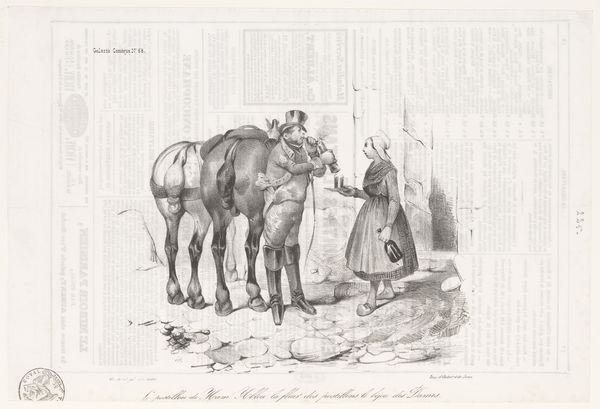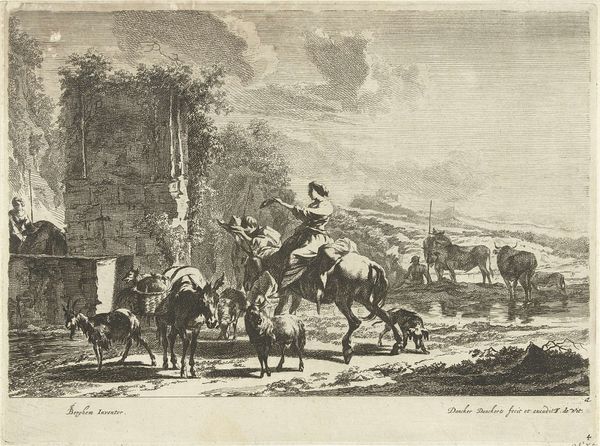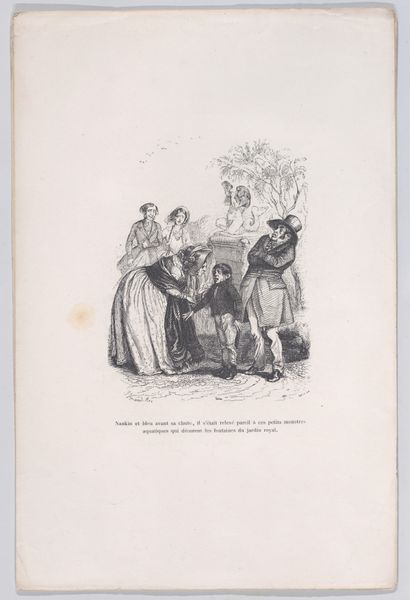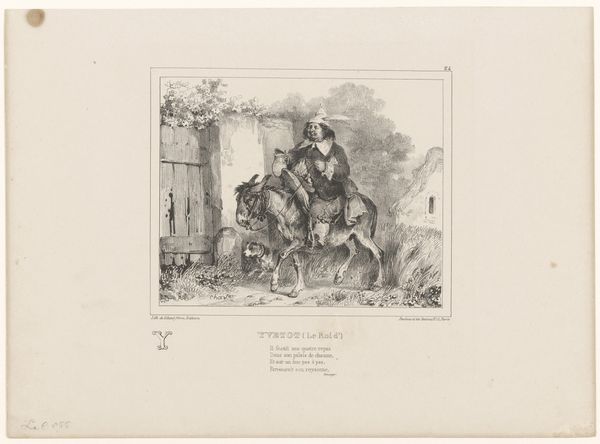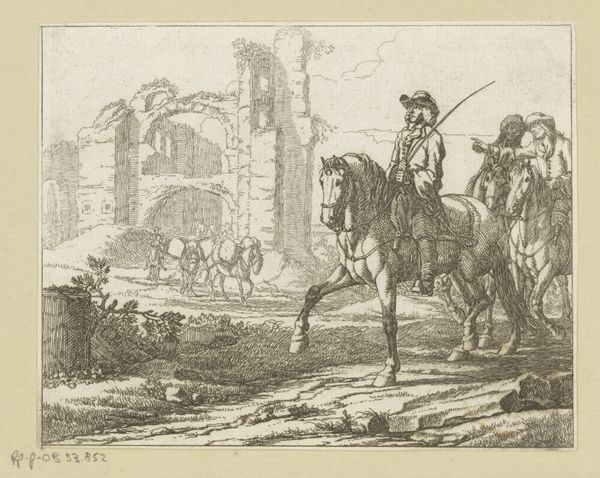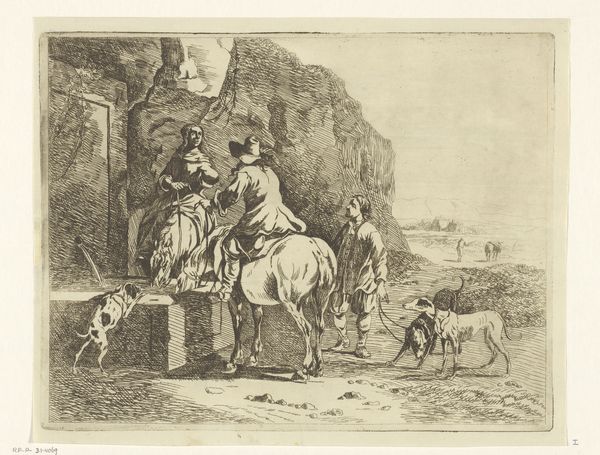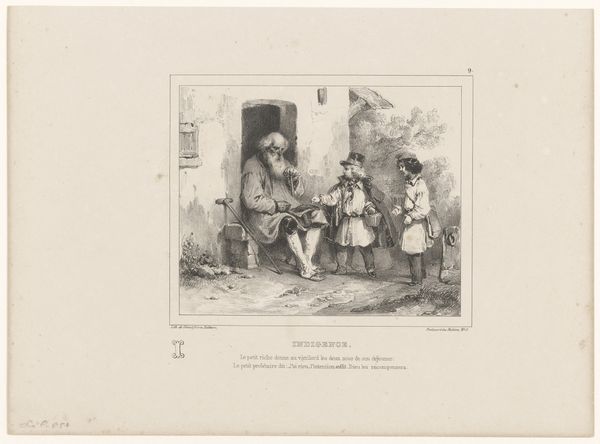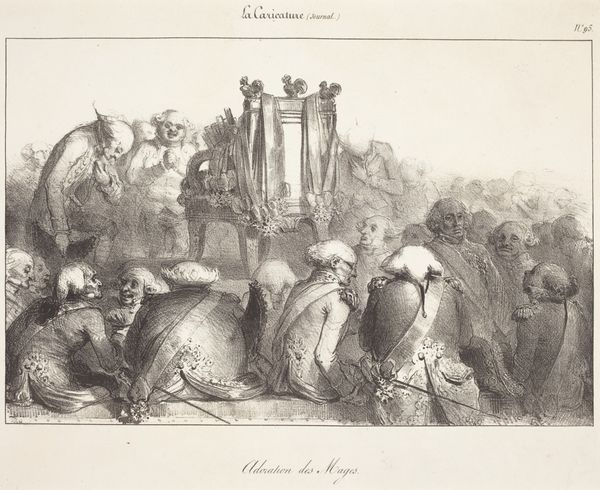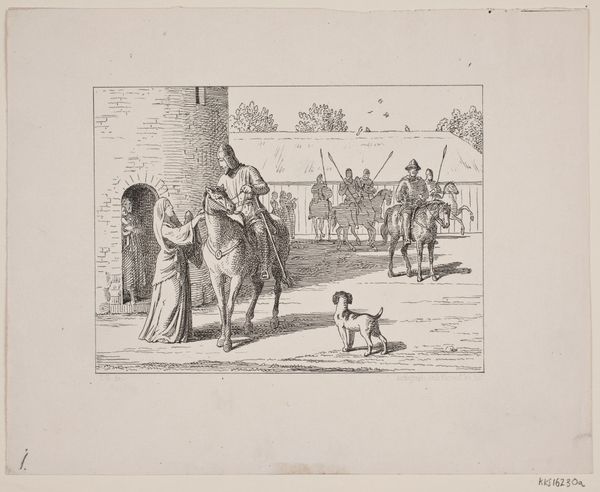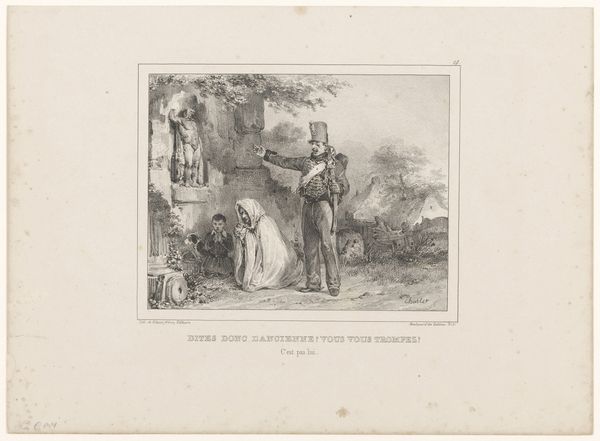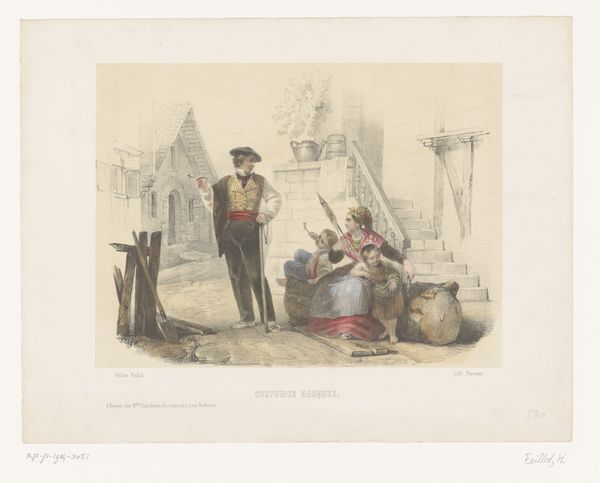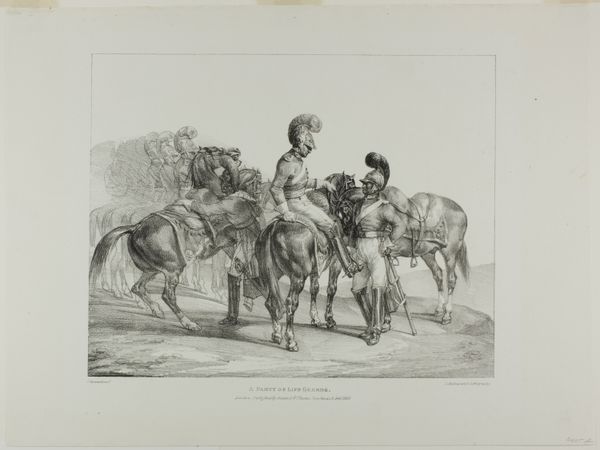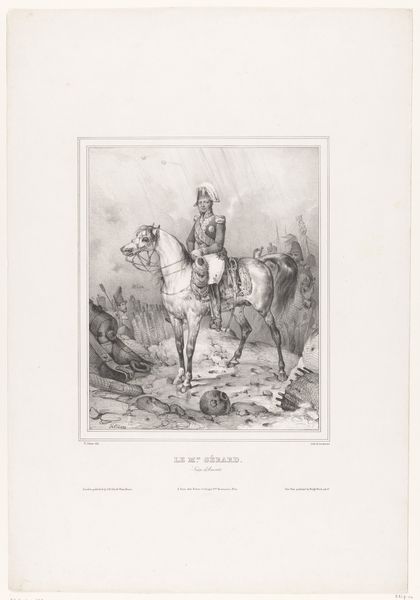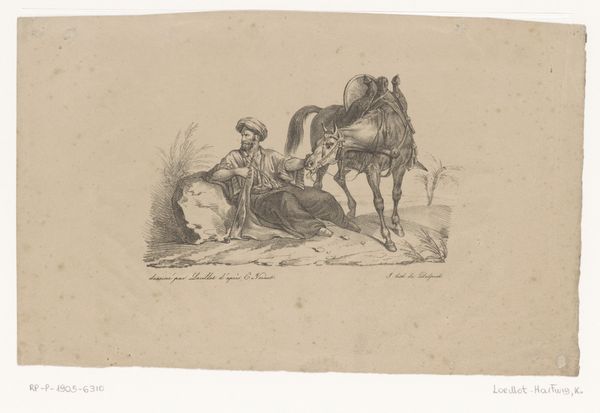
drawing, lithograph, print
#
drawing
#
lithograph
# print
#
caricature
#
figuration
#
romanticism
#
cityscape
#
genre-painting
Copyright: National Gallery of Art: CC0 1.0
Editor: Right now, we’re looking at “Three Vignettes,” a lithograph drawing by Hippolyte Bellangé from 1831. What immediately strikes me is its division, the separation of these moments...like glancing at street theatre through a set of keyholes. What pulls you into this print? Curator: It's a peculiar sensation, isn't it? Bellangé’s fragmented composition dances on the edge of caricature, inviting us to weave our own narratives. I see a man shielding himself as a high-ranking officer passes with his transport, and in the corner what seems like a small family huddled together. What threads do you feel connect them, if any? Or perhaps, what stories do they whisper individually? I find the way he's arranged them almost like scattered memories on a page...do you sense any nostalgia? Editor: Nostalgia, definitely. There's a sense of distance. I'm wondering if Bellangé intended some connection between military authority and the struggles of common people or is it only about presenting scenes observed through an artist's playful eye? Curator: Perhaps both? Bellangé had a profound awareness of the Napoleonic era's aftermath. Here, it seems he lets the city speak for itself – a subtle blend of romanticism and realism. Almost a… social commentary in glimpses. But that's just a feeling, you know? What really stays with me is the print itself, so vulnerable, delicate even – especially compared to its subjects' implied power. What remains with you? Editor: I love your perspective on that balance! It feels so fragile in rendering, and that gives me space to appreciate how Romantic art could also focus on everyday experiences and people. Thanks! Curator: Anytime! It's lovely to let these things linger, isn't it?
Comments
No comments
Be the first to comment and join the conversation on the ultimate creative platform.
